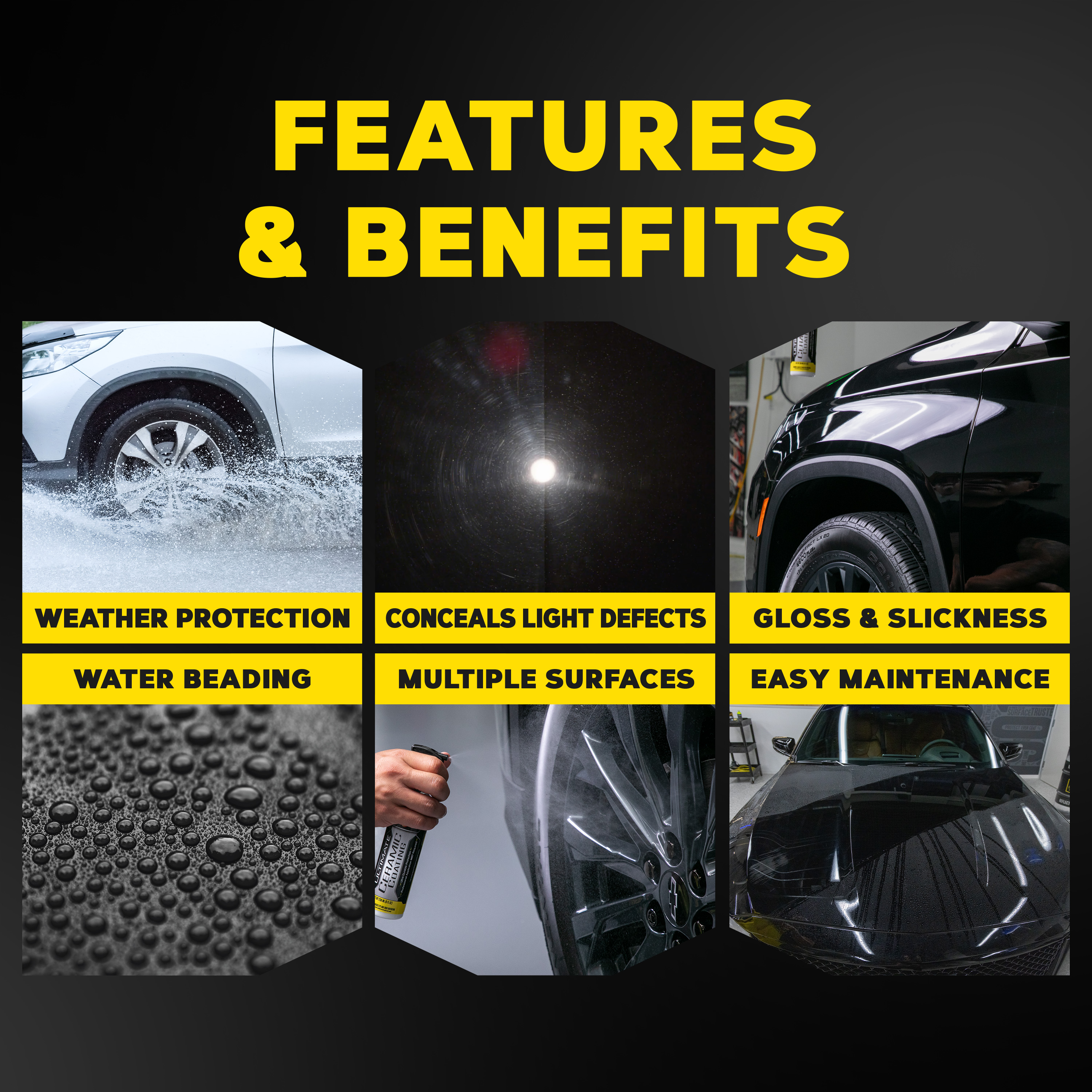The Duty of Ceramic Layer in Securing Your Auto's Paint From Environmental Damage
Ceramic finishing has arised as an innovative remedy for car proprietors seeking to preserve the stability of their car's outside. By developing a robust chemical bond with the paint, this innovative modern technology uses a formidable obstacle against numerous environmental hazards, such as UV rays, acid rain, and contaminants. Comprehending the detailed benefits and the ins and outs of the application process is crucial for maximizing its performance. As we explore the subtleties of ceramic covering, it comes to be noticeable that the choice to implement this safety step can substantially affect your car's long life and visual.
What Is Ceramic Covering?
Ceramic finish is an innovative fluid polymer applied to the exterior surfaces of a car, created to supply a durable layer of protection for the paint. This innovative service develops a chemical bond with the automobile's manufacturing facility paint, producing a hydrophobic and resistant shield. The covering includes nanoparticles that fill out the microscopic flaws in the paint, leading to a smooth surface that improves radiate and gloss.
Usually, ceramic finishes are readily available in numerous solutions, permitting for various degrees of security and durability. While some products can last for several months, others offer security for a number of years, depending upon the thickness of the application and ecological elements. The application process requires thorough prep work, including washing, sanitizing, and brightening the lorry's surface area to guarantee optimal attachment of the layer.

Advantages of Ceramic Finish
One of the primary benefits of applying a ceramic coating is the extraordinary defense it provides to automotive paint. This innovative finish develops a durable layer that guards the vehicle's surface area from a variety of ecological threats, consisting of UV rays, acid rainfall, bird droppings, and tree sap. By offering this durable defense, ceramic coatings dramatically minimize the danger of fading and etching, protecting the car's aesthetic allure with time.
Along with defense, ceramic finishings are renowned for their hydrophobic buildings, which fend off water and dust, making it simpler to keep a clean automobile. This self-cleaning result decreases the regularity of cleaning, saving both time and sources. Ceramic finishings boost the deepness of the paint's gloss, resulting in a sleek and vibrant appearance that boosts the overall appearance of the lorry.
Another significant advantage is the long life of ceramic coverings. Unlike typical waxes or sealants that need constant reapplication, ceramic coatings can last several years, using a cost-effective remedy for auto owners seeking long-lasting protection. Generally, purchasing ceramic coating causes enhanced toughness, reduced maintenance, and continual aesthetic appeal for automobile paint.
Just How Ceramic Layer Works
A ceramic finish runs via a chemical bonding procedure that creates a protective layer on the car's paint surface area. This cutting-edge solution uses advanced nanotechnology, where microscopic particles of silica are suspended in a liquid form - ceramic coating. Upon application, these particles bond with the manufacturing facility paint, creating a hydrophobic and resilient layer that improves the automobile's surface area
The primary part of ceramic coverings, silicon dioxide (SiO2), adds to the covering's stamina and resilience. When cured, the layer transforms right into a difficult, glass-like finish that guards the paint from ecological pollutants such as dust, UV rays, bird droppings, and tree sap. This molecular bond causes a surface that is not just immune to scratches but additionally less complicated to cleanse, as dirt and crud are much less likely to adhere.
In addition, the hydrophobic residential or commercial properties of ceramic coverings create water to bead and slide off, decreasing the chances of water places and mineral deposits. This protective content obstacle successfully extends the life of the paint and maintains the lorry's visual appeal, offering cars and truck owners a resilient remedy for paint security.
Application Process of Ceramic Finish
When considering the application of ceramic finish, prep work is key to accomplishing optimum results. Any type of scratches or imperfections should be dealt with at this phase, as the layer will certainly bond with the surface underneath.

Ceramic layer is after that applied in tiny areas, usually using an applicator pad. The lorry must be left to cure in a regulated atmosphere to permit the finish to continue reading this fully bond with the paint.
Long-Term Upkeep and Care
Attaining an effective ceramic coating application establishes the foundation for lasting security, yet appropriate maintenance is crucial to preserving its advantages. Regular cleaning is necessary; using a pH-neutral car hair shampoo will assist keep the finishing's integrity without triggering damages. Prevent automated vehicle cleans that use unpleasant materials, as they can endanger the covering's surface area.

Additionally, using a ceramic layer maintenance spray can improve the existing layer, supplying an added boost in security and sparkle. It's advisable to do this every 3 to 6 months, depending on environmental exposure.
Last but not least, parking in shaded areas or using cars and truck covers can protect against prolonged exposure to dangerous UV rays and ecological impurities, further extending the life of your ceramic covering. By adhering to these maintenance techniques, you can guarantee your vehicle's finish remains protected and visually appealing for many years to find.
Verdict
In recap, ceramic coating acts as a vital protective step for automobile paint, efficiently protecting cars from a range of environmental risks. Its capability to produce a robust hydrophobic barrier not only enhances visual allure yet additionally significantly reduces the regularity and strength of upkeep needed. The resilient nature of this sophisticated polymer underscores its value in preserving vehicle honesty and look, eventually adding to a much more resilient and visually attractive auto coating.
Ceramic finish is a sophisticated fluid polymer used to the exterior surface areas of an automobile, created to provide a durable layer of defense for the paint. Ceramic layers improve the depth of the paint's gloss, resulting in a vivid and refined look that boosts the sites general look of the lorry.
A ceramic covering operates via a chemical bonding procedure that produces a safety layer on the car's paint surface area.The major element of ceramic finishings, silicon dioxide (SiO2), contributes to the coating's toughness and resilience.In summary, ceramic layer serves as a crucial safety procedure for auto paint, properly protecting vehicles from a variety of ecological risks.
 Andrea Barber Then & Now!
Andrea Barber Then & Now! Freddie Prinze Jr. Then & Now!
Freddie Prinze Jr. Then & Now! Michelle Trachtenberg Then & Now!
Michelle Trachtenberg Then & Now! Mary Beth McDonough Then & Now!
Mary Beth McDonough Then & Now! Robin McGraw Then & Now!
Robin McGraw Then & Now!